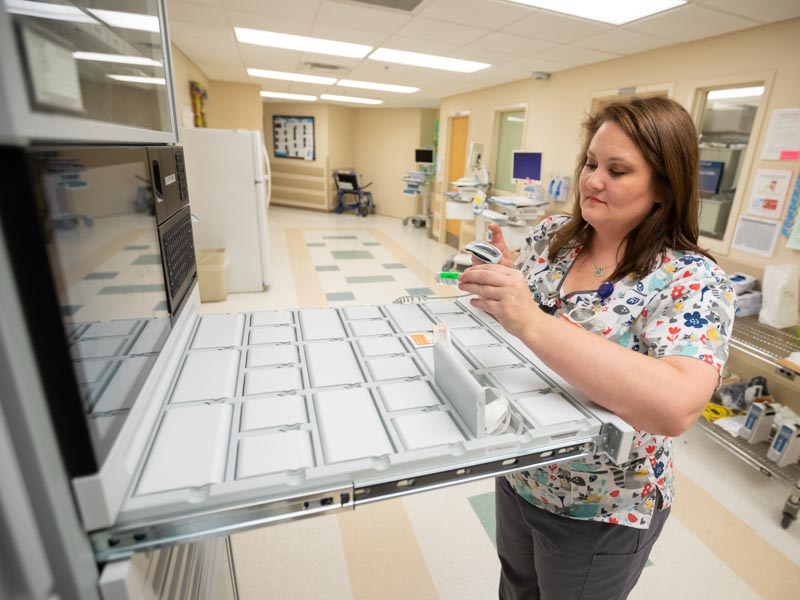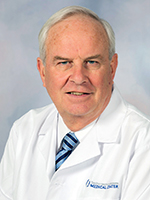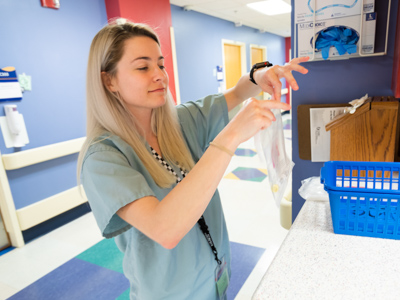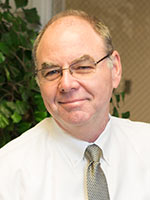UMMC's patient safety efforts take big leap forward

The University of Mississippi Medical Center’s Hospital Safety score from a private hospital ratings group stands at a “C” as front-line caregivers and hospital leadership continue to drive change and make measurable progress in patient safety.
The survey reports on overall performance factors that can potentially result in patient harm. The grade, made public May 15 by The Leapfrog Group, reflects hard work on the part of caregivers and is an improvement over the “D” rating received in November 2018 after the Medical Center’s overall score fell slightly. The grade also reflects improvements realized from UMMC’s top strategic initiative of quality improvement.

“We have made significant progress, but the work is not done. This is an ongoing journey,” said Chief Medical Officer Dr. Michael Henderson.
Leapfrog twice annually uses data that’s up to three years old to calculate a hospital’s A-F letter grade, meaning the latest score lags behind improvements made at UMMC over the past several years. That includes significant gains in some of the metrics graded.
UMMC is the state’s safety net hospital, providing care for the sickest of the sick, regardless of income. Mississippi’s only Level I trauma center and the state’s only children’s hospital are both located at the Medical Center’s Jackson campus. Almost all of the total 697 beds in the hospitals and their intensive care units are full on a daily basis.
Leapfrog bases its ratings on a total of 28 metrics. Twenty focus on safety and use publicly reported data from the Centers for Medicare and Medicaid Services, or CMS for short. The data include patient safety indicators such as complications after surgery, pressure ulcers, rates of hospital-acquired infection, and systems in place to prevent them. Other metrics are based on non-safety processes, such as how patients rate their overall experience.
Leapfrog takes its data from the 80-plus metrics that hospitals must report that are published on CMS’ Hospital Compare website.
Reducing variability in patient harm events is a major push for 2019, Henderson said. “We must do this across all hospital locations, departments, for different types of infection” and other patient care scenarios, he said.

Variability in areas such as hospital acquired infections and hand hygiene compliance is tracked in real-time metrics, from month to month, on the Medical Center’s Clinical Intranet. Information carried on a Safety/Quality Scorecard is broken down not just by each hospital, but by each patient floor.
“We’ve made significant improvement in the last three years, but reducing variability is the major performance improvement focus,” Henderson said. “Based on the variability we’ve seen, it’s our greatest opportunity for improvement.
“We should not lose sight of the fact that UMMC has made major improvements in patient safety over the past two years, including a 60 percent decrease in hospital-acquired infections and an 80 percent improvement in other patient safety indicators to the enormous benefit of patients,” Henderson said.
UMMC Grenada, one of the Medical Center’s two community hospitals, rose to a “C” from the “D” rating it was assigned by Leapfrog in fall 2018. The Grenada hospital, licensed for 156 beds, is also taking steps “to get on the same path to improve safety,” Henderson said.

“We have to get better at what we do every day. That’s our focus, whether it be patient safety, patient experience or employee engagement,” said James Caldwell, chief nursing officer on the Grenada campus. “Our management team is focused on this, and we are making progress.”
How Leapfrog determines scores, as well as the methodology behind CMS ratings, has come under fire from national hospital organizations that say those groups don’t adequately risk-adjust for the sickest of the sick patients and socio-demographic challenges faced by academic medical centers such as UMMC that serve large numbers of economically disadvantaged and very sick patients.
Of hospitals receiving the lowest scores from CMS, 80 percent of academic medical centers are ranked below the 50th percentile. “UMMC is compared to all other participating hospitals, from the smallest (25 or fewer beds) to the largest medical centers,” Henderson said. “It’s not an apples-to-apples comparison.
“However, we don’t do anything different because of the scores,” Henderson said. “Our quality improvement continues.”


